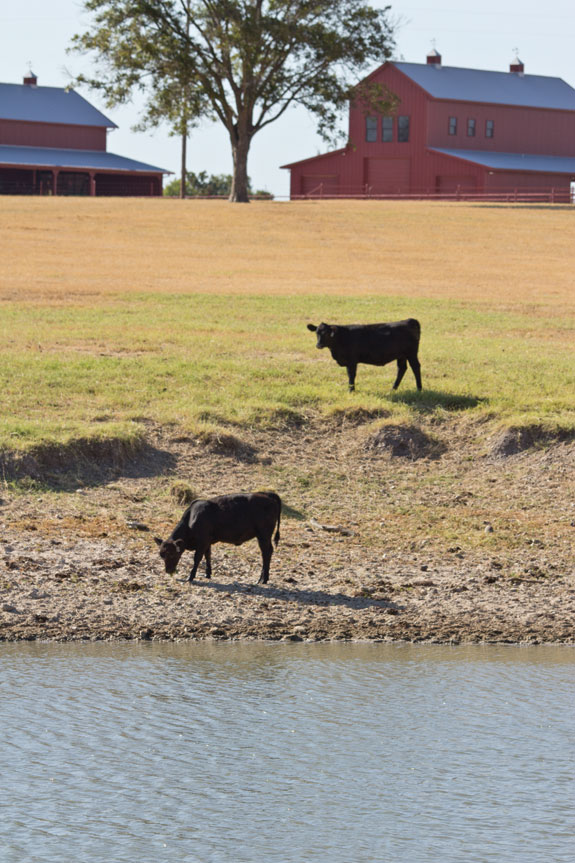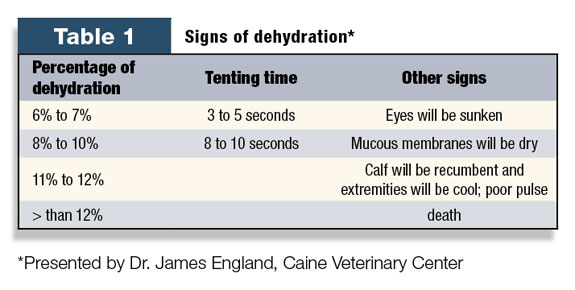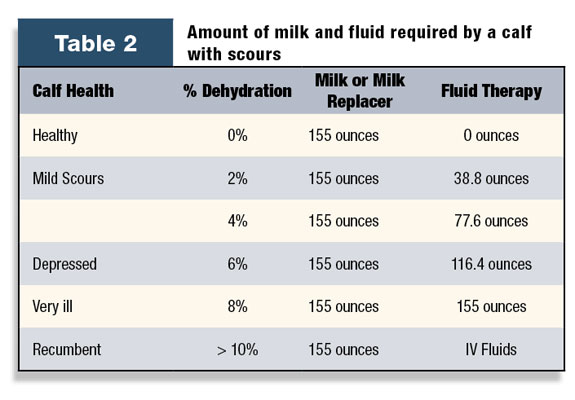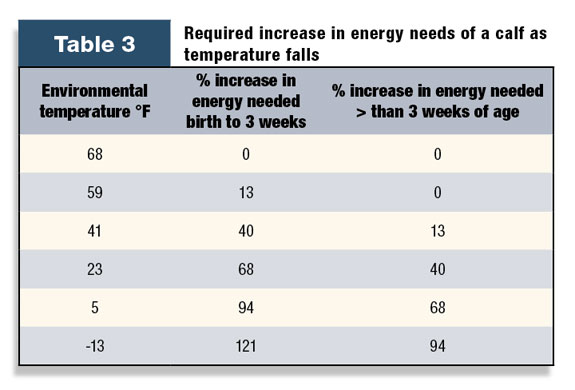Scours is a clinical syndrome associated with a host of diseases and characterized by diarrhea in calves.
While determining the specific cause, a rancher’s main objective should be to treat the loss of fluids, electrolyte imbalances and acidosis that occurs with scours.

Calves with scours usually become dehydrated. You can determine the extent of dehydration by looking for a few clinical signs.
Clinical signs will begin to show when the calf is 6 to 7 percent dehydrated. The easy way to check for dehydration is to tent the skin over the neck or shoulders.

This is done by pinching the skin between the thumb and forefinger. If the calf is not dehydrated, the skin will return to normal in less than three seconds. Table 1 summarizes the signs of dehydration.
In most cases where the calf dies, it is not from the agent that caused the scours, but from the dehydration and loss of electrolytes.
Ranchers need to recognize signs of dehydration early and treat with aggressive fluid therapy. Calves have few body reserves and need adequate nutrition at all times.
You should not withhold milk. It is not recommended to mix milk with electrolyte fluids, but to feed it alternately with the treatment.

Table 2 outlines how much milk and how many fluids a calf should receive by how dehydrated they are and the severity of the scours.
There are several dry electrolyte powders available for oral administration. Be sure to read the instructions and mix accordingly. Homemade mixes can also be used in scour treatment. A couple of recipes follow:
Recipe 1: Mix 1 tablespoon baking soda, 1 teaspoon salt and 250 cc (8 ounces) of 50 percent dextrose. DO NOT use sugar! Add enough warm water to make 1 gallon of solution. Give the calf 1 quart every three to four hours.
Recipe 2: Mix 1 package fruit pectin, 1 teaspoon lite salt, 2 teaspoons baking soda, 1 can beef consumé. Add enough water to make 2 quarts. Give 1 quart every four to six hours.
At 8 to 10 percent and greater dehydration, it becomes necessary to give the calf fluids intravenously (IV). There are several commercial IV solutions available.
Read and follow label instructions when administering. You can also use an at-home recipe. This recipe calls for 1 gallon of distilled water and a monoject 20cc syringe case full of baking soda.
Mix these together. Shake to mix. Give the calf 2 quarts of warm baking soda/water mix via IV as fast as possible and then slow drip to one drip per second for remaining 2 quarts in two to four hours.
Fluid therapy is to support the calf while you determine the cause of the scours. Once you to determine the cause, you need to treat the cause.
While a calf has scours, they are using up what few energy reserves they have to stay alive. As the temperature drops, the calf uses more energy.

Table 3 illustrates the percentage increase in energy a calf uses at different environmental temperatures. As the table shows, it may become necessary to provide supplemental heat for the calf to decrease the amount of energy being expended.
Be prepared for scours by having a “scours toolbox” ready. You should include distilled water, baking soda, 20cc monoject syringe case, salt, 18- gauge x 1.5-inch needles, IV drip sets, IV fluid bags, IV catheters, syringes, milk replacer, calf bottle, tube feeder and supplies for oral electrolytes.
Scours is not an “if” but a “when,” so be prepared. Watch calves for signs of scours and support the calf with milk and fluids while you determine the cause. ![]()
PHOTO
Top: Monitor your calves to be sure they’re drinking water and check them up-close for dehydration in the case of scours. ![]() Staff Photo.
Staff Photo.







